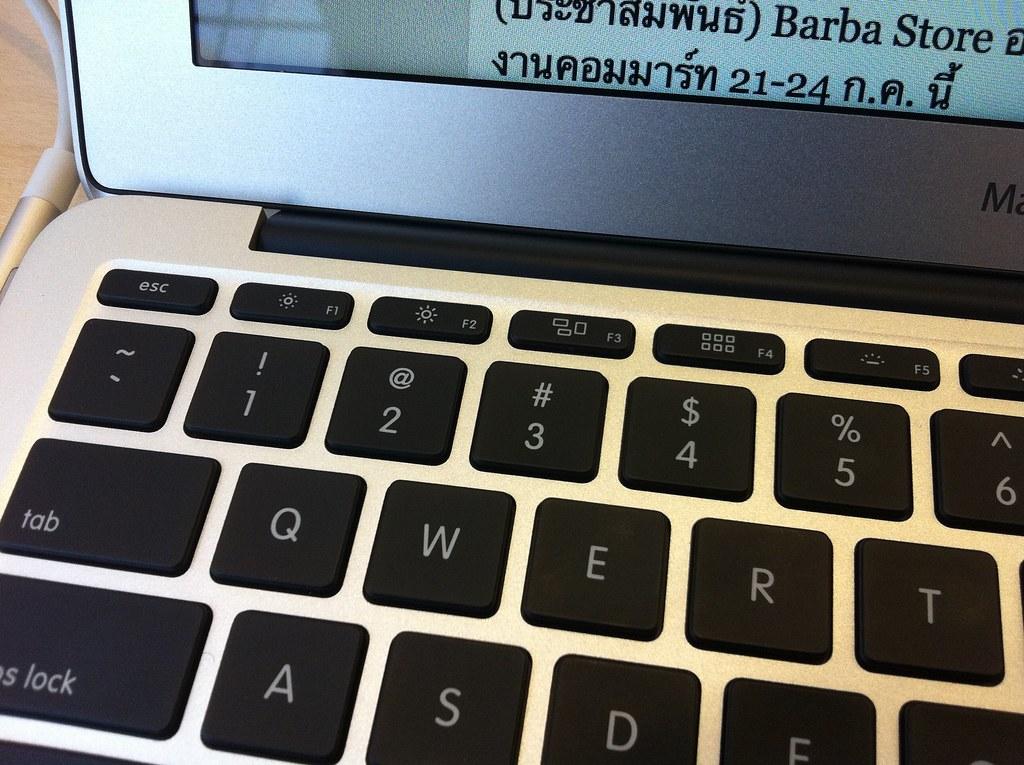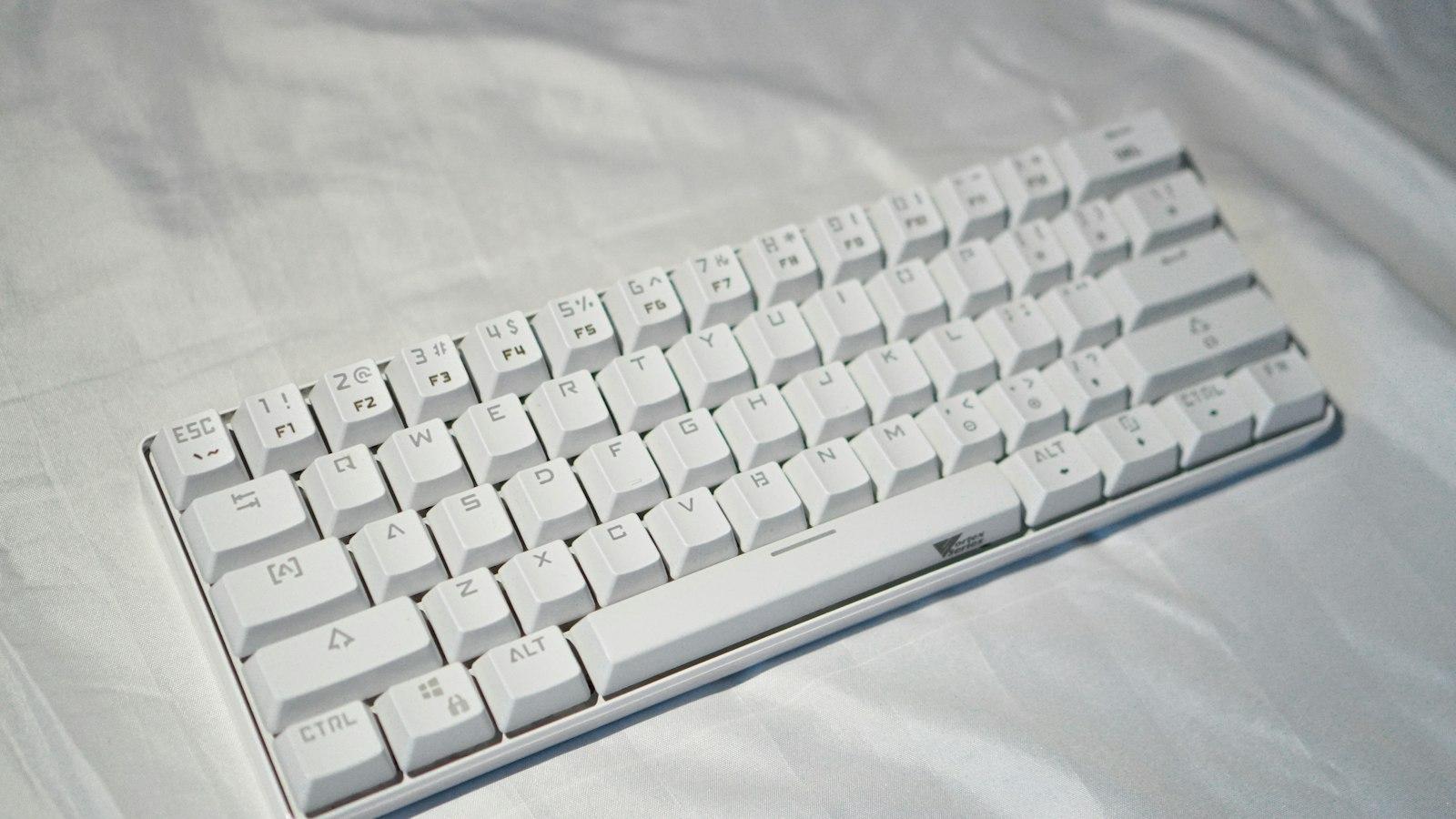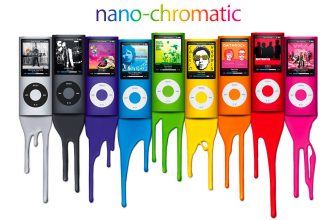
In today’s interconnected world, many individuals find themselves working across multiple devices simultaneously or seeking efficient ways to share resources. For Mac users juggling between two computers, using one keyboard may seem like an arduous task. However, with the right setup and a few simple steps, you can effortlessly streamline your workflow and operate both Macs from a single keyboard. In this informative article, we delve into the intricacies of seamlessly connecting and utilizing one keyboard for two Macs, enabling you to maximize productivity and enhance the user experience. Whether you’re a professional striving for seamless multitasking or a home user seeking convenience, read on to discover the practical solutions for synchronizing your Macs and revolutionizing your computing setup.
Introduction
Are you tired of switching between keyboards every time you want to use a different Mac? Well, we have good news for you. In this post, we will show you how to use one keyboard for two Macs. With this simple trick, you’ll be able to seamlessly use the same keyboard for both of your Macs, saving you time and energy.
First, let’s talk about the hardware you’ll need. You’ll need a keyboard that supports Bluetooth connectivity, as well as two Macs with Bluetooth capabilities. If you don’t have a Bluetooth keyboard, you can easily find affordable options online or at your local electronics store. Make sure to check the compatibility of the keyboard with your Macs before making a purchase.
Once you have the necessary hardware, it’s time to set up your keyboard. Begin by turning on the keyboard and activating Bluetooth pairing mode. On your first Mac, go to System Preferences and click on Bluetooth. Make sure Bluetooth is turned on and select the keyboard from the list of available devices. Follow the on-screen instructions to complete the pairing process.
Now, let’s move on to the second Mac. Follow the same steps as before to activate Bluetooth and select the keyboard from the list of devices. However, this time you might encounter a problem – both Macs will be connected to the keyboard simultaneously, resulting in a jumbled typing experience. To solve this, we recommend using a software called “Synergy”. Synergy allows you to seamlessly control multiple computers with one keyboard and mouse, eliminating the issue of duplicate input.
With Synergy installed on both your Macs, you’ll be able to use one keyboard for both of them without any interference. Simply move your mouse cursor to the edge of one screen, and it will seamlessly appear on the other screen. You can copy and paste between the two Macs, and even drag and drop files. Synergy also allows you to switch between the Macs using hotkeys, making the process even more convenient.

Compatibility Requirements for Sharing a Keyboard Between Two Macs
Using one keyboard for two Macs can be a convenient solution if you frequently switch between multiple computers. However, before attempting to share a keyboard between two Macs, you need to ensure compatibility between the devices. Here are some essential compatibility requirements to consider:
1. Operating System Compatibility
To share a keyboard between two Macs, both computers need to be running compatible operating systems. Generally, Mac computers running OS X 10.2 or later should work seamlessly. However, it’s always a good idea to check for any compatibility issues specific to your Mac models and operating systems.
2. Connection Types
Another crucial consideration is the connection types available on your Macs and the keyboard itself. Most newer Macs feature USB or USB-C ports, while older models might have USB-A or Thunderbolt ports. Ensure that your keyboard has the necessary connection type or an adapter to match the available ports on both Macs.
3. Bluetooth Capability
If you prefer a wireless setup, make sure both of your Macs support Bluetooth connectivity. Check the specifications of your computers to verify their Bluetooth versions and ensure compatibility with your keyboard. Additionally, ensure that the keyboard has Bluetooth functionality and is compatible with the required Bluetooth version.
4. Keyboard Layout
An often overlooked compatibility consideration is the keyboard layout. Depending on where you purchased your keyboard, it may have a different layout than the standard layout in your country. Ensure that the keyboard layout matches your preferences and is convenient for both Macs.
5. Software Configuration
Once the hardware compatibility is sorted, you may need to configure some software settings to enable keyboard sharing between the two Macs. Macs offer a built-in feature called ”Keyboard Sharing” that allows you to use one keyboard and mouse to control multiple computers. Make sure this feature is enabled on both Macs, and follow the necessary steps to set it up correctly.

Setting Up Sharing on macOS: Step-by-Step Guide
In today’s fast-paced world, productivity is key, and having multiple devices can sometimes hinder efficiency. However, fear not, because there’s a solution to this problem: using one keyboard for two Macs! Yes, you read that right! With macOS, you can easily set up sharing between two Macs, allowing you to control both devices using a single keyboard. This step-by-step guide will walk you through the process of setting up this convenient feature.
Step 1: Check Compatibility
Before diving into the setup process, ensure that both of your Macs have macOS 10.13 or later installed. This feature is supported on most recent models, but it’s always better to double-check compatibility to avoid any surprises.
Step 2: Enable Keyboard Sharing
Begin by opening the System Preferences on both Macs. In the Sharing preferences panel, tick the box next to “Keyboard Sharing” on both devices. This will enable the sharing feature and allow you to control one Mac with the keyboard of the other.
Step 3: Connect the Macs
To enable the keyboard sharing functionality, you need to establish a connection between the two Macs. Connect an Ethernet or Thunderbolt cable between the two devices, or make sure both are connected to the same Wi-Fi network. This connection is necessary for seamless communication between the Macs.
Step 4: Configure Keyboard Sharing
Now that your devices are connected, you’ll need to configure the keyboard sharing settings. On the Mac that will act as the primary device, navigate to the Keyboard settings in System Preferences. Here, you can set the preferences for each connected Mac individually. You can choose to share the keyboard automatically or require confirmation.
Step 5: Start Sharing!
Once you’ve completed the previous steps, you’re ready to start sharing your keyboard between the two Macs. Begin by selecting the Mac you want to control from the shared keyboard. Move your mouse cursor seamlessly from one screen to another, and start typing away! It’s like having two devices working as one.
In conclusion, setting up sharing on macOS to use one keyboard for two Macs is a game-changer for productivity. With just a few simple steps, you can save time and effort by seamlessly controlling multiple devices using only one keyboard. Take advantage of this convenient feature and upgrade your multitasking abilities. So go ahead, follow this step-by-step guide and elevate your productivity to new heights!
Using Third-Party Software to Optimize Keyboard Sharing Experience
When it comes to optimizing your keyboard sharing experience between two Macs, third-party software can be a game-changer. With the right tools, you can seamlessly control both devices using just one keyboard, enhancing productivity and convenience. In this post, we’ll explore how you can use third-party software to achieve this.
1. Identify the Right Software
The first step is to find a reliable third-party software that specializes in keyboard sharing. Look for options that are compatible with both Macs, ensuring smooth compatibility and functionality. Some popular choices include Synergy, Teleport, and ShareMouse. Consider reading user reviews, comparing features, and opting for a software that suits your specific needs.
2. Install and Set Up the Software
Once you’ve chosen your preferred software, download and install it on both Macs. Follow the installation instructions provided by the software developer. After installation, you’ll need to configure the software to connect your two Macs. This usually involves assigning a primary and secondary Mac, enabling secure connection settings, and selecting keyboard sharing preferences.
3. Sync Your Devices
After the initial setup, it’s time to sync your devices. Ensure that both Macs are connected to the same network, whether it’s through Ethernet or Wi-Fi. Open the third-party software on both machines and establish a connection between them. Once connected, your primary Mac’s keyboard will be able to control both devices simultaneously.
4. Customize Keyboard Sharing Settings
Most third-party software allows you to personalize your keyboard sharing experience. Take advantage of these customization options to optimize your workflow. You can remap certain keys, adjust mouse cursor settings, and even configure screen switching shortcuts. Experiment with different settings until you find the perfect balance that suits your needs and preferences.
5. Troubleshooting and Additional Features
If you encounter any issues during the setup or while using the software, consult the documentation provided by the developer. Troubleshooting guides and online forums can be valuable resources for resolving common problems. Additionally, explore any additional features offered by the software, such as file sharing, clipboard synchronization, or remote control functionalities.

Troubleshooting Common Issues: Keyboard Connectivity and Input Lag
The ability to use one keyboard for multiple devices is a convenient option for many users. If you own two Mac computers and want to streamline your workflow by using a single keyboard, you’re in luck. In this post, we will guide you through the process of connecting one keyboard to two Macs and troubleshooting any connectivity or input lag issues that may arise in the process.
Before diving into the steps, it’s important to note that you will need a keyboard that supports Bluetooth connectivity. Most modern keyboards have this functionality, but double-check to ensure yours is compatible.
To begin, follow these steps:
- On your first Mac, go to System Preferences and click on “Bluetooth.”
- Turn on Bluetooth if it’s not already enabled.
- Put your keyboard in pairing mode. Refer to the manufacturer’s instructions for your specific keyboard model.
- Once your keyboard is in pairing mode, it should appear in the Bluetooth device list on your Mac. Click on it to initiate the pairing process.
- After a successful pairing, your keyboard should be connected to your first Mac.
Now that you have successfully connected your keyboard to one Mac, let’s move on to connecting it to the second one:
- On your second Mac, follow the same steps as above to access the Bluetooth settings.
- Ensure Bluetooth is turned on.
- Put your keyboard in pairing mode again.
- In the Bluetooth device list, you should now see your keyboard listed as an available device. Click on it to initiate the pairing process.
- Once the pairing is complete, your keyboard should now be connected to both Macs simultaneously.
If you encounter any issues with keyboard connectivity or experience input lag, here are a few troubleshooting tips:
- Ensure your keyboard’s battery is charged or replace the batteries if necessary.
- Make sure your Mac’s Bluetooth is functioning properly by checking for software updates.
- Try restarting both Macs and resetting the Bluetooth connection.
- Disconnect any other Bluetooth devices that may be interfering with the keyboard’s connection.
By following these steps and troubleshooting tips, you should be able to use a single keyboard for two Macs without any issues. Enjoy the efficiency and convenience of this setup for your workflow!
Q&A
Q: What is the purpose of this article?
A: This article aims to provide a step-by-step guide on how to use one keyboard for two Mac computers, allowing users to efficiently switch between multiple devices without the need for an extra keyboard.
Q: Why would one need to use one keyboard for two Macs?
A: Using one keyboard for multiple Macs can be helpful in various scenarios, such as when you have both a desktop and a laptop and wish to streamline your workflow. It provides convenience and efficiency by eliminating the need to constantly switch between keyboards or a KVM switch.
Q: What are the requirements to set up one keyboard for two Macs?
A: To set up this connection, you will need two Mac computers, both operating with macOS, a reliable network connection between the two Macs, and a software called “Synergy” or a similar application.
Q: What is Synergy and how does it work?
A: Synergy is a software application that enables the sharing of one keyboard and mouse between multiple computers. It allows the user to control two or more computers seamlessly, using only a single keyboard and mouse setup. The software utilizes a server-client architecture, where one Mac acts as the server and the other as the client.
Q: How can one set up Synergy between two Macs?
A: To set up Synergy between two Macs, you will need to follow these steps:
- Download and install the Synergy application on both Macs.
- Determine which Mac will be the server and the client.
- Launch Synergy on both computers and configure the respective roles.
- Establish the connection by entering the server’s IP address on the client computer.
- Customize the positioning of each Mac’s screen within Synergy to match the physical arrangement.
- Save the configuration and start using a single keyboard with both Macs.
Q: Is Synergy the only software available for this purpose?
A: No, Synergy is just one of the available software options. Other alternatives like “Barrier” and ”Multiplicity” offer similar functionality and can also be used to achieve the one keyboard for two Macs setup.
Q: Can this method be used with non-Mac devices?
A: Yes, the concept of sharing one keyboard for multiple devices extends beyond Macs. Synergy and similar software are compatible with various platforms, including Windows, Linux, and even some mobile operating systems.
Q: Are there any limitations or potential issues when using one keyboard for two Macs?
A: While the one keyboard setup can greatly enhance productivity, it’s essential to consider some limitations. For instance, there might be slight delays or lag when switching between the Macs, depending on the network conditions. Compatibility issues may also arise if one of the Macs is significantly older or running a very outdated operating system.
Q: Can other peripherals, such as a mouse, be shared between the two Macs as well?
A: Yes, Synergy and similar software allow for the sharing of both a keyboard and a mouse between multiple Macs. This means that only one set of peripherals is needed to control both computers seamlessly.
Q: Is it possible to expand the setup to include more than two Macs?
A: Absolutely. Synergy and similar software support multi-computer setups. By configuring the primary server as the main machine, you can connect and control additional Macs, extending the one keyboard setup efficiently.
Q: Where can I find more information about setting up one keyboard for multiple Macs?
A: You can refer to the official websites of Synergy, Barrier, or Multiplicity for detailed installation and configuration guides. Additionally, online forums, YouTube tutorials, and other informative articles can provide further assistance. In conclusion, using one keyboard for two Macs can greatly enhance your productivity and help you manage your workflow efficiently. By following the simple steps outlined in this article, you can seamlessly switch between multiple devices without the hassle of reconnecting keyboards or investing in separate peripherals. Whether you are a professional working across different workstations or someone looking to maximize convenience at home, this method allows you to control multiple Macs effortlessly. Remember to ensure that both your Macs are running compatible software versions and have a stable network connection for optimal performance. With the right tools and settings, you can enjoy a unified typing experience and unlock the full potential of your Mac ecosystem.






